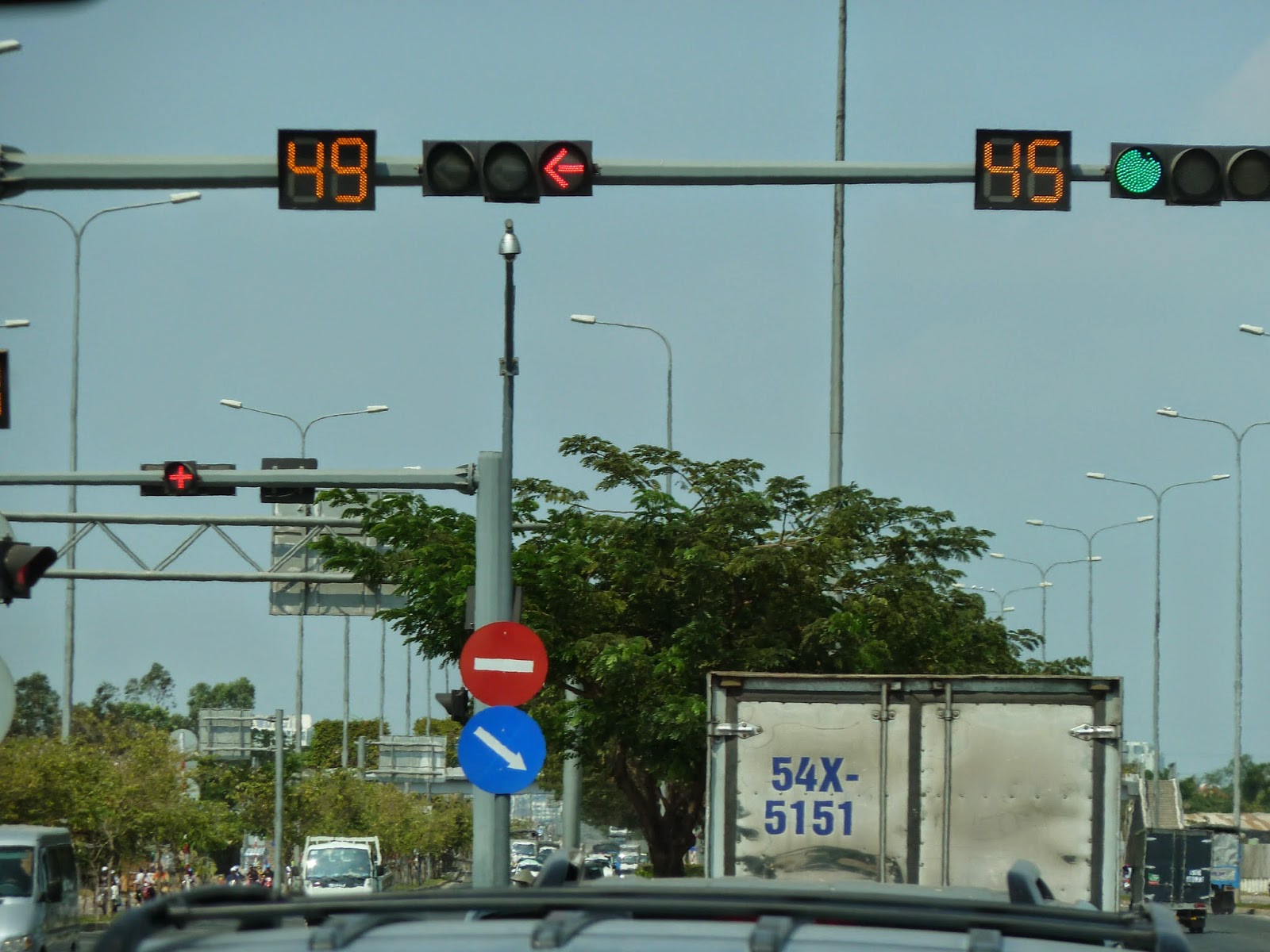 |
| I couldn't help but observe the interesting/different approach to wires and street selling. Note the washing hanging in the balcony |
 |
| typical countryside - bananas, rice fields, and I think our guide thought the raised vines were likely to be watermelon. |
Our guide pointed out the graves in the middle of the countryside - the deceased would choose to be buried in their rice field - as a way of ensuring the family connection to that piece of land. The state 'owns' all the land, but families lease the land (can't remember if it's 50 or 70 years), and then reapply when the lease is up. By burying family members on the land they ensure that other families are less inclined to expand, and over development in the countryside is less likely. It also ties the next generation to the land, but this becoming less of a bind, as the lure of better paid jobs in the city or overseas (Taipan) is quite powerful.
 |
| this absolutely is the WINNER! I like the counterbalance over the front wheel and between the driver's legs... |
So we were shown the absolutely lovely central Post Office - http://en.wikipedia.org/wiki/Saigon_Central_Post_Office, which had recently been painted on its exterior...
 |
| this statue must be post war - communist propaganda or Vietnamese patriotism? |
Built 1886-1891 when the area was under French colonial rule and was called French IndoChine. A little earlier they'd built (1863-1880) the cathedral - Notre Dame Basilica, which is still in use and survived the War - http://en.wikipedia.org/wiki/Saigon_Notre-Dame_Basilica
 |
| our group and Notre Dame |
Another hot and exhausting day. The children and J went back to the hotel to cool down. Simon, R and myself then went onto the War Remnants Museum (http://en.wikipedia.org/wiki/War_Remnants_Museum) which I'll continue with next time.
Night y'all. Kat







No comments:
Post a Comment